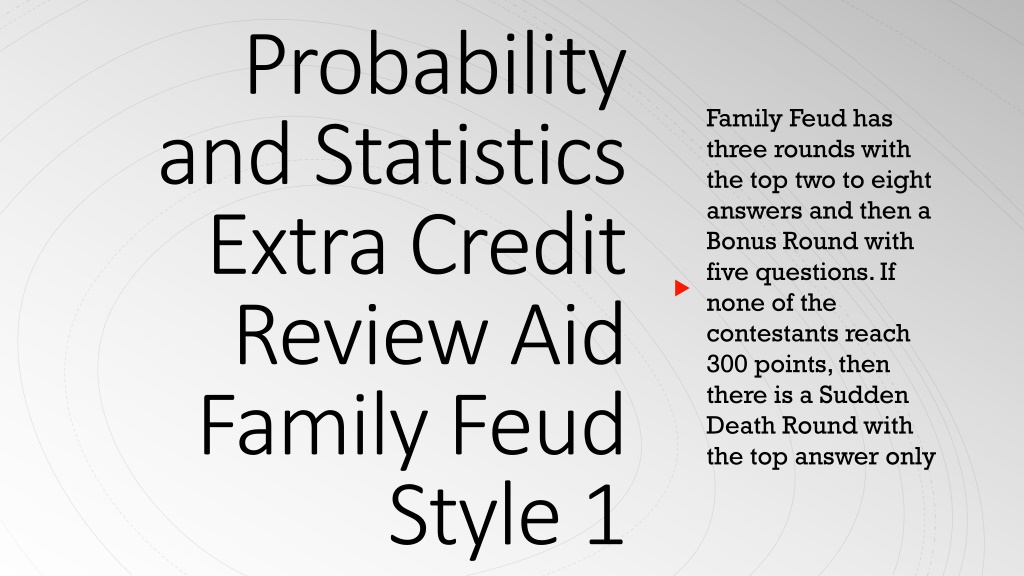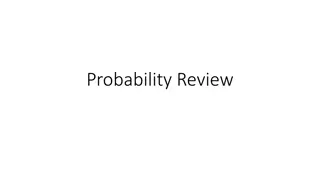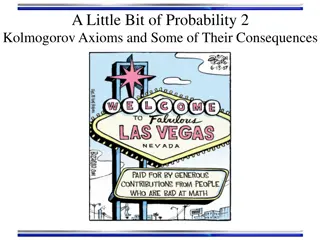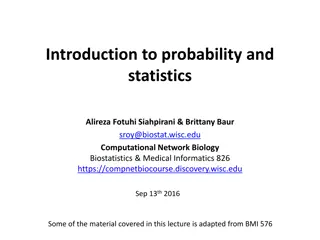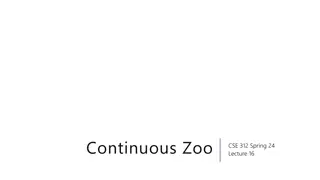Probability and Statistics Family Feud Style Review
Family Feud style review aid covering central tendency measurements, data types, games for learning probability, and collection methods. Bonus rounds on continuous data, survey games, and demographic graphs. Includes review problems on probability games.
Download Presentation

Please find below an Image/Link to download the presentation.
The content on the website is provided AS IS for your information and personal use only. It may not be sold, licensed, or shared on other websites without obtaining consent from the author. Download presentation by click this link. If you encounter any issues during the download, it is possible that the publisher has removed the file from their server.
E N D
Presentation Transcript
Probability and Statistics Extra Credit Review Aid Family Feud Style 1 Family Feud has three rounds with the top two to eight answers and then a Bonus Round with five questions. If none of the contestants reach 300 points, then there is a Sudden Death Round with the top answer only
Top Four Answers: A. Mean = average Round 1: Name four measurements of Central Tendency. B. Median = middle number C. Mode = the number that occurs the most D. Range = the largest minus the smallest number
Top Two Answers: A. Qualitative Data = characteristics, such as personality B. Quantitative Data = measurement, such as a dog s height or weight Round 2: Name two types of data, or information.
Round 3: What are some games that we can play in order to learn about Probability, or the odds of something happening? Top Four Answers: A. Blackjack B. Catch 21 C. Dominoes D. Solitare
Sudden Death Round: What is the formula to find the probability, or odds of something happening? Probability = number of ways it can happen/total number of outcomes Top Answer Only:
1. What is the simplest way to collect data? 2. What is discrete data? Bonus Round: Five Questions 3. What is continuous data? 4. Provide an example of a survey game. 5. Provide an example of a graph that can be used for demographics.
1) Direct Observation 2) Data that can be counted, e.g. number of students Sample 3. Data that is measurable, such as a dog s height and weight Answers To The Bonus Round 4. Family Feud 5. Circle Graph
Review Problems: Probability Games 1. In a game of Solitare, what are the chances that you will get an Ace? A. 1/13 B. C. 1/5 2. In a game a Dominoes, what are the chances that you will land on an even number? A. 1/6 B. C. 1/3 3. On a multiple-choice assessment with three answer choices, such as Common Knowledge, what are the chances of your getting the answer correct? A. B. 1/3 C. 1/4
https://www.google.comGoogle at https://www.google.com References Maths Is Fun Website at https://www.mathsisfun.com
